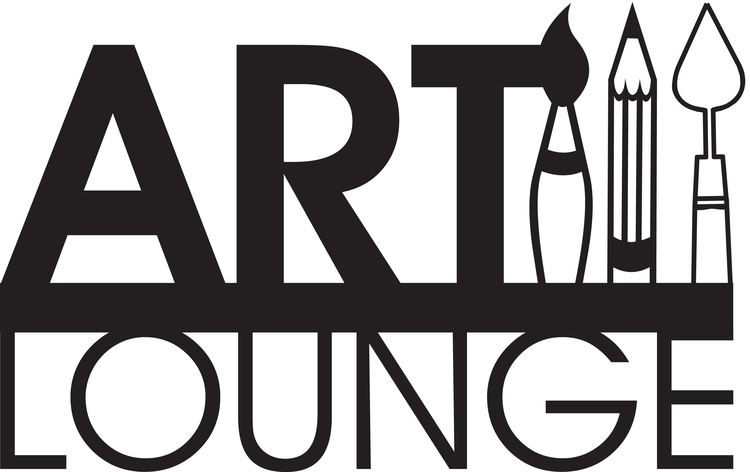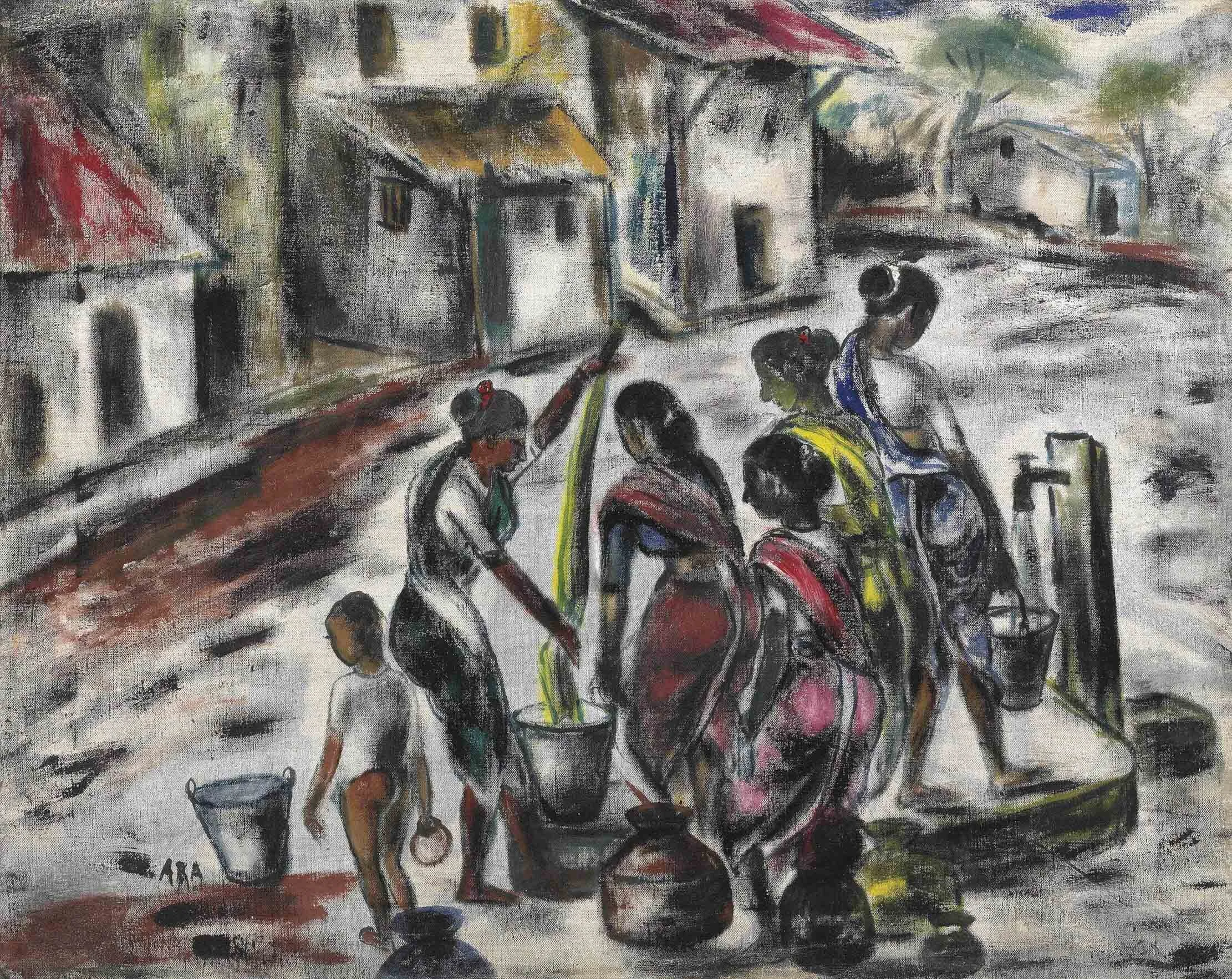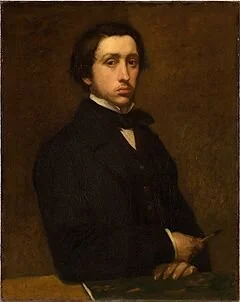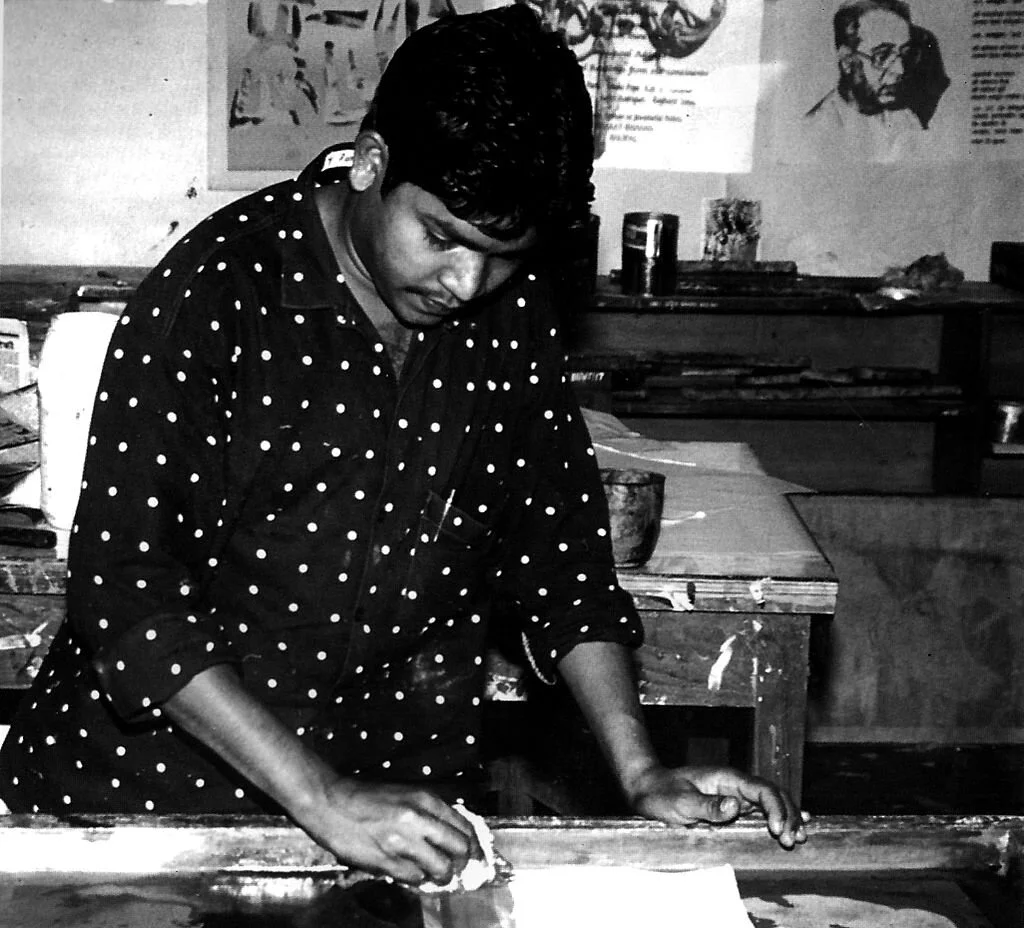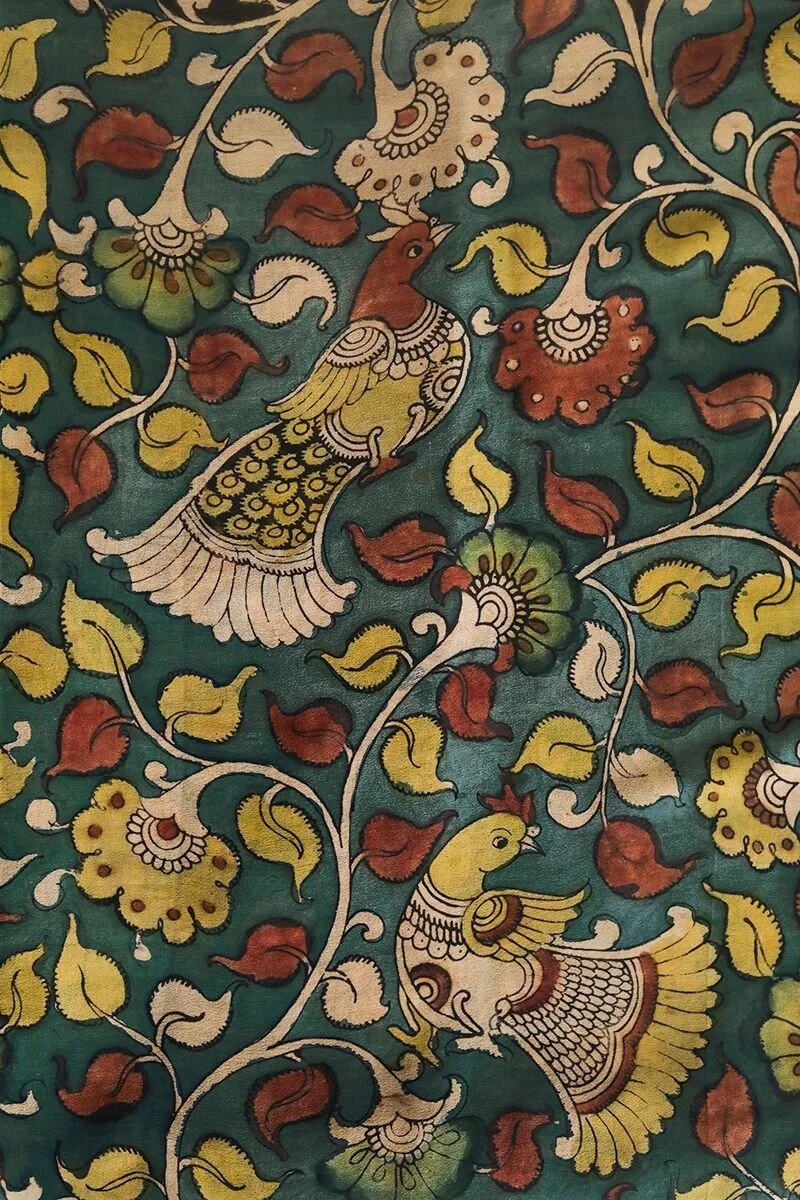An amalgamation of the scientific approach of chemistry and the creativity of art, devoid of technology, cyanotype is one of the oldest photographic printing processes in the history of photography. Becoming increasingly popular with contemporary artists who love to experiment with their media and constantly seek new ways to incorporate unconventional mediums in their work.
Read MoreNatalia Sergeevna Goncharova was a Russian avant-garde artist, painter, costume designer, writer, illustrator, and set designer. She was a founding member of the Jack of Diamonds (1909–1911) and Donkey's Tail (1912–1913), and with Larionov invented Rayonism (1912–1914).
Read MoreKrishnaji Howlaji Ara was an Indian painter and is seen as the first contemporary Indian painter to meticulously use the female nude as a subject. He was a part of the Progressive Artists' Group in Bombay and was a founder of the Artists' Centre in Mumbai. Opinions about Ara's works remain divided with his critics accusing them of lacking perfection and not referenced from life.
Read MorePakhal Tirumal Reddy known as P T Reddy, was an Indian artist. He was the fifth child born to Ram Reddy and Ramanammachild at Annaram village, Karimnagar district, Telangana, India. He received his diploma in painting from J. J. School of Art, Bombay in 1939. He married Yashoda Reddy on 9 May 1947, and she completed a master's of art and Ph.D. degrees and authored over 22 compilations and novels. P T Reddy played a role in the introduction and the evolution of the so-called "Modern Art" of Europe to India.
Read MoreRamkinkar Baij was an Indian sculptor and painter, one of the pioneers of modern Indian sculpture and a key figure of Contextual Modernism. Baij was born in an economically modest family in the Bankura district of the modern state of West Bengal in India.
Read MorePichhwai also known as pichhavai, pichhvai, pechhavai etc. are large devotional Hindu painted pictures, normally on cloth, which portray Krishna. They are mainly made to hang in Hindu temples of the Pushtimarg devotional tradition, especially the Shrinathji Temple in Nathdwara, Rajasthan, built around 1672. They are hung behind the idol of Shrinathji, a local form of Krishna and the centre of Pushtimarg worship, to depict his leelas.
Read MoreMysore painting is an important form of classical South Indian painting that originated in and around the town of Mysore in Karnataka encouraged and nurtured by the Mysore rulers. Painting in Karnataka has a long and illustrious history, tracing its origins back to the Ajanta times.
Read MoreManishi Dey was an Indian painter of the Bengal School of Art. He was born in Dhaka, Bengal Presidency on 22nd September, 1909. He died in Kolkata at the height of his career at 56 years of age. Manishi Dey was the younger brother of Mukul Dey, a pioneering Indian artist and dry point etcher. Their two sisters, Annapura and Rani, were accomplished in arts and crafts as well.
Read MoreEdgar Degas born in Paris on 19 July 1834 was a French Impressionist artist famous for his pastel drawings and oil paintings. Degas also produced bronze sculptures, prints and drawings. Degas is especially identified with the subject of dance; more than half of his works depict dancers. Degas began his schooling at age eleven, enrolling in the Lycée Louis-le-Grand. Degas began to paint early in life. By the time he graduated in literature in 1853, at age 18, he had turned a room in his home into an artist's studio.
Read MoreGanga Devi was an Indian painter, considered by many as one of the leading exponents of Madhubani painting tradition. She is credited with popularizing the Madhubani painting outside India. She was born in 1928 in Mithila in the Indian state of Bihar in a Kayastha family and took to the traditional painting craft, specialising in the kachni (line drawing) style. She traveled abroad with her art and was a part of the Festival of India in the United States, which yielded a number of paintings under the title, America series, including Moscow Hotel, Festival of American Folk Life, and Ride in a Roller Coaster.
Read MorePatachitra or Pattachitra is a general term for traditional, cloth-based scroll painting, based in the eastern Indian states of Odisha and West Bengal. Patachitra artform is known for its intricate details as well as mythological narratives and folktales inscribed in it. Pattachitra is one of the ancient artworks of Odisha, originally created for ritual use and as souvenirs for pilgrims to Puri, as well as other temples in Odisha.
Read MoreR K Joshi was born in 1936, in Kolhapur, India. He was an academic type designer and calligrapher. He designed the core Indian fonts used in Microsoft Windows. He was brought up in the town of Kolhapur, Maharashtra. He developed an interest in alphabets, their shapes, styles and design. In 1952, he decided to study art at Sir J.J. Institute of Applied Art, Mumbai. During this time, he found a scarcity of typefaces in Indian languages.
Read MoreJangarh Singh Shyam (1962–2001) was a pioneering contemporary Indian artist. Jangarh was born into a Pardhan Gond family in the village of Patangarh, Eastern Madhya Pradesh. He grew up in extreme poverty which forced him to quit school and try his hand at farming. He grazed buffaloes and sold milk in a nearby town. Jangarh was approached by the talent scouts of the arts museum Bharat Bhavan, he met the artist Jagdish Swaminathan which led to a lifelong collaboration between the two.
Read MoreFrida Kahlo
Frida Kahlo's beloved home is now a museum. Much of the interior has been preserved just the way Kahlo had it in the 1950s, making the space a popular tourist attraction that allows visitors a look at her work, life, and personal artifacts, including the urn that holds her ashes.
Read MoreKalamkari is a type of hand-painted or block-printed cotton textile produced in Isfahan, Iran, and in the Indian state of Andhra Pradesh. Only natural dyes are used in Kalamkari, which involves twenty-three steps. There are two distinctive styles of Kalamkari art in India – Srikalahasti style and the Machilipatnam style. The Srikalahasti style of Kalamkari, where the "kalam" or pen is used for freehand drawing of the subject and filling in the colors, is entirely hand worked.
Read MoreThanjavur painting is a classical South Indian painting style, which was inaugurated from the town of Thanjavur also known as Tanjore. The art form draws its immediate resources and inspiration from way back about 1600 AD, a period when the Nayakas of Thanjavur under the suzerainty of the Vijayanagara Rayas encouraged art.
Read MoreKatsushika Hokusai known simply as Hokusai, was a Japanese artist, ukiyo-e painter and printmaker of the Edo period. Born in Tokyo, Hokusai is best known as author of the woodblock print series Thirty-six Views of Mount Fuji which includes the internationally iconic print, The Great Wave off Kanagawa.
Read MoreRalph Hotere was born on 11 August 1931 in Mitimiti, Northland. He was a New Zealand artist and is widely regarded as one of New Zealand's most important artists. In 1994 he was awarded an honorary doctorate from the University of Otago and in 2003 received an Icon Award from the Arts Foundation of New Zealand. Hotere received his secondary education at Hato Petera College, Auckland, where he studied from 1946 to 1949.
Read MoreThe history of origami followed after the invention of paper and was a result of paper's use in society. Independent paper folding traditions exist in East Asia, and it is unclear whether they evolved separately or had a common source. The Japanese word "origami" itself is a compound of two smaller Japanese words: "ori", meaning to fold, and "kami", meaning paper. But not all forms of paper folding were grouped under the word origami.
Read More
